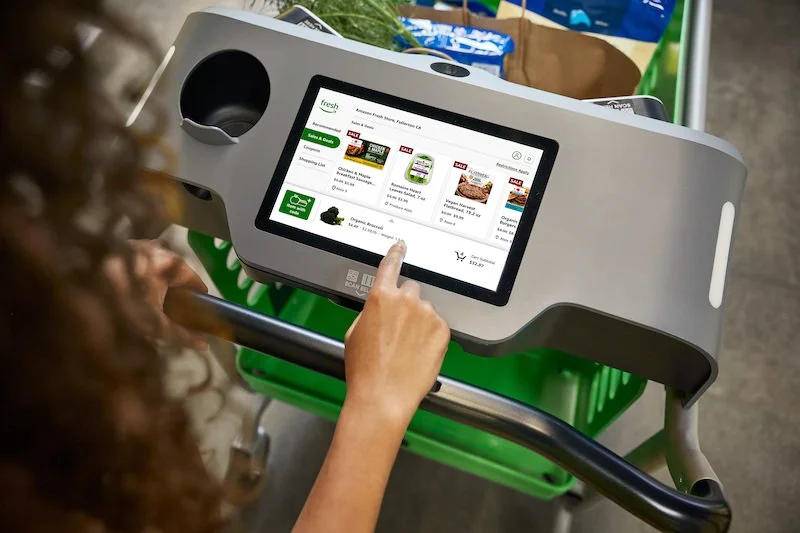Spotlight on retail cybersecurity challenges: strategies for protection
Retail businesses face serious cybersecurity challenges in a digital age where data breaches and cyber threats constantly loom.
Readers will find concise guidance on robust defence mechanisms against the sophisticated digital risks that threaten the integrity and trust essential to successful retailing.
The evolution of cybersecurity in the retail sector
Retail organizations are experiencing a profound evolution as they transition from classic in-person storefronts to the digital realm.
The increase in cyberattacks and this shift have highlighted the crucial pivot from tangible security strategies to constructing secure online defences, particularly in high stake environments such as online casinos, where progressive casino jackpots attract substantial digital traffic and financial transactions.
In response to their migration into cyberspace, retail businesses - and similarly, online gaming platforms - recognise an increasing need for extensive and robust security measures to protect against potential cyber threats and ensure the integrity of both user data and financial transactions.
Confronting cyber attackers is now a critical issue for those in the retail sector.
The Proliferation of E-commerce Platforms
The fast growth of online stores has led to new cybersecurity risks. Many stores say cybersecurity is their top worry when going online. Around 34% fear attacks and data breaches.
As more shops go online, their customer data becomes an inviting target for hackers. So tracking retail cybersecurity stats is crucial for dealing with threats.
To stay safe, stores must conduct security testing often. Regular testing helps meet rules like PCI DSS and boosts defenses against attacks.
The rise of online shops means security operations have changed. Robust controls are vital to stop data breaches from happening.
Follow the Rules - PCI DSS and GDPR
In today's digital world, following the rules is a must, not a choice. Stores need to obey rules like the General Data Protection Regulation (GDPR) and PCI DSS. These rules help keep card details safe and earn people's trust.
They say stores must protect personal information and handle credit card details with care, including customer payment information.
Not following the rules can hurt. If stores don't protect data, they risk big legal trouble and can lose people's trust.
So stores must make following the rules a top goal. They need to use security solutions that protect customer data and keep their business running smoothly.
Making defences stronger: advanced security for stores
Even with lots of threats, stores still have ways to protect themselves.
By using flexible approaches and strengthening identity and access rules, stores can beef up defences against complex ransomware attacks and advanced AI tech.
This lets them get the right tools and resources. Let's talk about some cool security tricks stores can use to stay safe from cyber bad guys.
Using Spread-Out Networks
Stores can boost their security by having networks split up in different places. By making separate little networks, they can keep any breaches from spreading to everything.
This is super important since only around one in four businesses have set this up properly.
Having networks in multiple spots is helpful for several reasons. The separate parts act like barriers, stopping cyber attacks from reaching beyond their area.
This protects sensitive data better. With more cyber threats nowadays, using spread out networks is becoming necessary for strong security.
Double Check Identity and Digital Certificates
Another great tactic is using multi-factor authentication and digital certificates. Multi-factor means adding extra identity checks like fingerprints, voice recognition, or one-time codes.
This makes it harder for hackers to sneak in since they need more than just a password.
Digital certificates are a key part of keeping stores safe online. They acts like an online passport, letting stores and others know who is who on the web.
When used with other ways to check who you are, like multi-factor authentication, digital certificates make it much harder for cyber crooks to get in.
Cloud-Based Services and Antivirus Software
Having antivirus software and cloud-based services is a must for keeping stores cyber secure. These cloud antivirus systems give stores:
Quick protection from new threats
Less chance of data breaches and work stoppages
Fast updates to keep stores safe
Little need for storage space on each device
Easy setup across many devices
This way, lets stores keep up their cyber defences in an adaptable, resource-friendly manner.
As stores rely more on complex tech solutions like cloud services, there are now more ways for cyber crooks to sneak in. Stores must be aware of this trade off. They need strong security controls and best practices to stop these risks.
Cybersecurity best practices for retail organisations
To stay cyber secure, stores must follow best practices and use advanced security measures.
Stores can protect themselves by training staff, having detailed response plans for incidents, and doing regular security checkups.
Training Your Staff and Raising Cyber Awareness
Your employees are the frontline defence against cyber threats. That's why proper training is crucial for any cybersecurity plan.
With human error being the cause of over 80% of data breaches, ensuring your staff stays cyber aware is a top priority. Strong cyber training covers data policies, password best practices, and hardware/software security protocols.
By empowering your people with knowledge, you build a vigilant team ready to spot and stop threats before they escalate.
Engaging cyber training makes a real difference. Use real-world examples your staff can relate to.
Keep it interactive with Q&As, quizzes, and scenario-based exercises. And make it an ongoing effort - cyber risks constantly evolve, so training must keep pace.
With a proactive, employee focused approach, you'll strengthen your human firewall against cyber attacks.
Developing a Solid Incident Response Playbook
Even with robust preventive measures, cyber incidents can still occur. That's when having a clear, well practiced incident response plan pays off.
This detailed playbook outlines precise actions to contain threats, minimise the fallout, and swiftly restore normal operations post-incident.
Regular reviews ensure your plan aligns with emerging risks and evolving IT infrastructure.
An effective incident response strategy covers key areas like:
Assessing vulnerability points and setting plan objectives
Reviewing apps and systems to identify potential weak spots
Establishing roles and communication protocols for smooth coordination
Outlining steps for evidence gathering and forensic investigation
Developing processes to patch gaps and bolster defences post-incident
Remember, advance preparation is vital - you can't formulate an effective response in the heat of a crisis.
With a pragmatic, frequently updated incident response plan, your team stays ready to rapidly neutralize cyber threats and protect vital business interests.
Do a review after an attack to see what happened and learn for the future.
Change the plan based on what you learned from the attack review.
Work with third-party vendors to have a unified plan for responding to cyber incidents. By doing these things, retailers can deal with cybersecurity threats and protect their systems and data.
Regular Security Check-ups and Testing
Regular security check-ups and testing are essential for robust cybersecurity. By finding potential cybersecurity risks within a retail company, these practices help manage those risks proactively.
Tests like checking if network areas are properly isolated confirm that different parts of a network are adequately separated according to security standards - this is crucial for maintaining strong cyber defences.
In addition to internal measures, thoroughly assessing risks from third-party vendors is key to mitigating external threats.
This involves ensuring vendors follow necessary regulations and frequently auditing their adherence to strict security policies.
It's vital for preventing data breaches. By consistently evaluating and probing for system vulnerabilities, retailers can stay one step ahead in safeguarding against potential cyber attackers.
The role of technology in securing retail transactions
As more shopping moves online, tech tools keep your payment info safe. Apps encrypt and tokenize data to protect against hackers.
Encryption codes your details so bad guys can't read them. Tokens swap payment info for random codes only stores can use. Pretty clever, right?
Let me show you some cool cyber safety tricks to keeping your money covered. It's wild what's out there nowadays.
Encryption and Tokenization Protect Your Payment Deets
Encrypting and tokenizing payment data is key for retail security. Encryption scrambles your info into a secret code only stores can crack.
Tokenization swaps payment numbers for unique random tokens during checkout. Hackers can't steal what they can't read!
For example, Point-to-Point Encryption (P2PE) locks up data as it travels from card readers to payment processors. It's like a digital safe for your card details.
Using these security methods builds a solid wall against data breaches. Shoppers can buy worry free, knowing their payment info stays locked down tight.
Making Shopping Safe with Smart Tech
These days, AI and machine learning help keep stores secure. They can spot odd data patterns that might mean hackers are trying to break in. This gives stores a chance to stop cyber attacks before they happen.
As AI gets smarter, it'll only get better at finding threats and dealing with them automatically. That way, stores can use people for other tasks while staying safe from hackers.
AI and machine learning are becoming more critical for store security. By catching threats automatically and handling them, this tech can free up workers' time.
That means stores can focus on other jobs while still being protected from cyberattacks, even as hackers get sneakier. As the tech improves, it'll keep getting harder for hackers to break in.

































Continue reading...